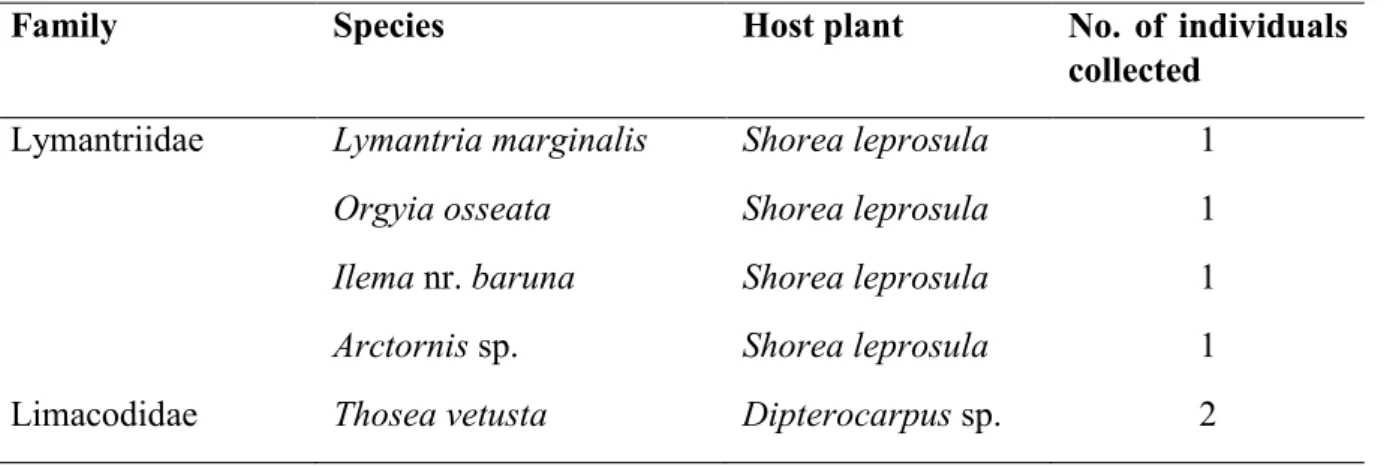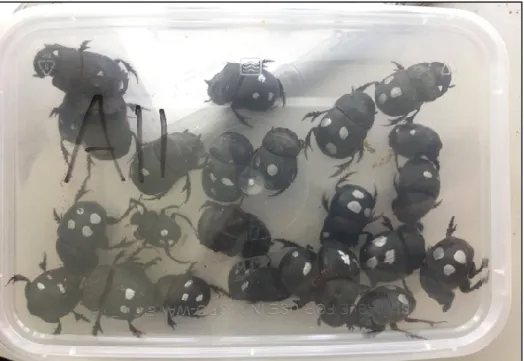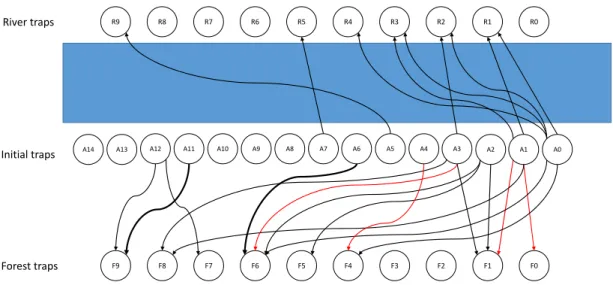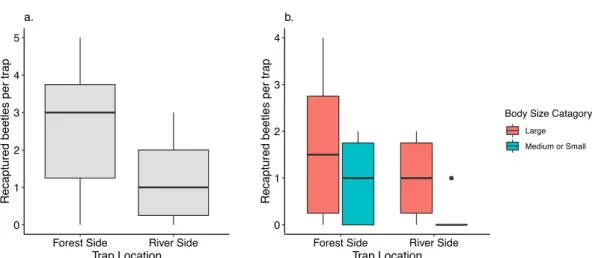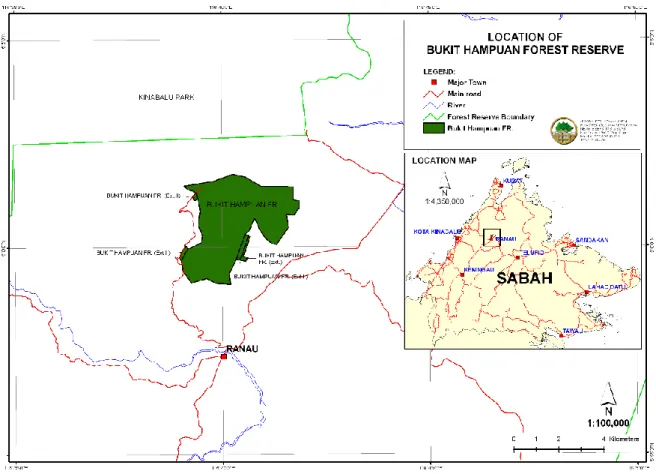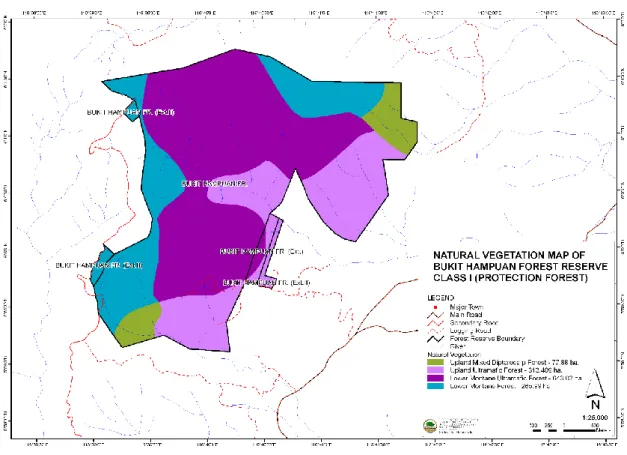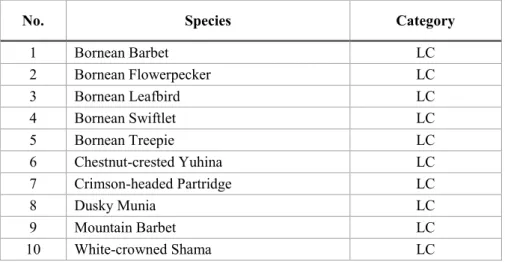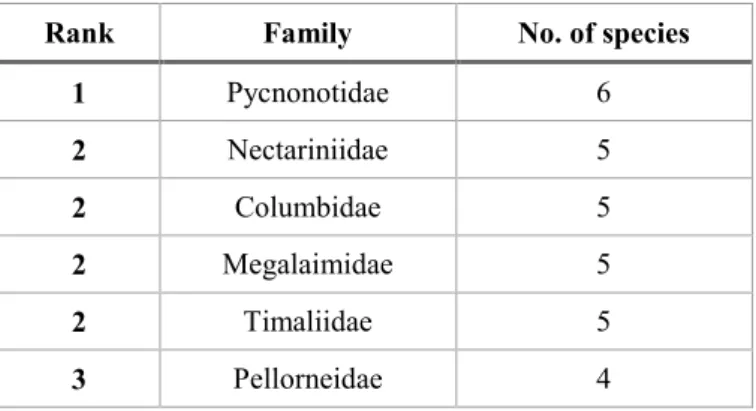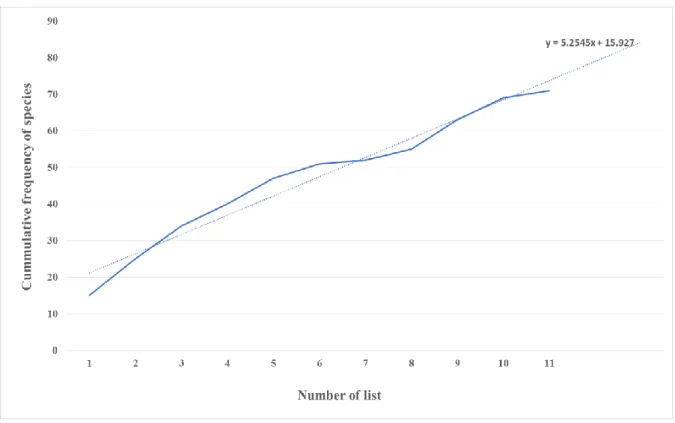Small habitat fragments have been shown to lose biodiversity at a faster rate than larger fragments (Gibson et al. 2013). MRR methods are generally much more difficult in tropical forests compared to temperate regions due to highly dense vegetation and an abundance of rare species (Vlasanek et al. 2013). Dung beetles are an ideal study taxon for such a study as they have been successfully used in previous MRR experiments (e.g. Arellano et al. 2008, Viljanen 2009, da Silva & Hernandez 2015).
In addition, dung beetles provide important ecosystem functions and services in tropical forests, such as secondary seed dispersal, nutrient recycling and soil bioturbation (Nichols et al. 2008, Slade et al. 2011). Dung beetles were identified to species or morphospecies (see Appendix A for individuals identified to species) using photographic references and a dichotomous key (Parrett et al., unpublished) and assigned to functional groups (size and parting and nesting behavior) to following Slade et al. . In addition, flight distances of large and medium beetles (with trap-specific markings) were estimated from the grid coordinates of the traps using the package Geodist (Padgham et al. 2020) in R and GPS coordinates of trap locations.
Because a full complement of dung beetle functional groups is required to maximize ecosystem functioning in tropical forests (Slade et al. 2007), such work would provide valuable insights for species conservation and ecosystem functioning. Our results show that the river did not provide a complete barrier to dung beetle movement, which is consistent with previous work in Madagascar suggesting that the range of many dung beetle species is not determined by river barriers (Knopp et al. 2011). The ability of large beetles to cross river barriers may be important for ecosystem functioning at the landscape level, as large tunnel diggers contribute disproportionately to dung burial (Slade et al. 2007).
Furthermore, edge effects from oil palm plantations may interact with abiotic conditions to affect dung beetle diversity in riverine buffers (Williamson et al. 2021).
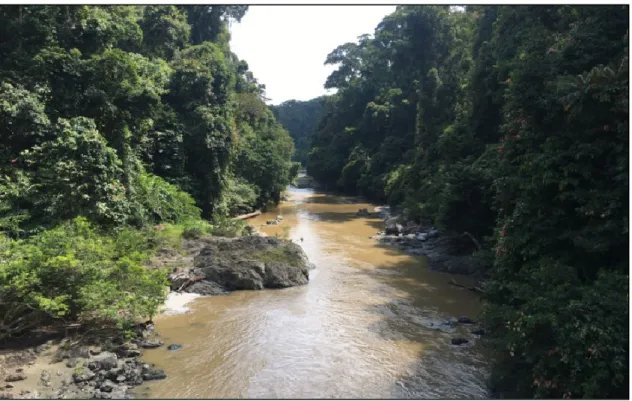
Avifaunal survey of the lower montane forest of Bukit Hampuan in Ranau, Sabah, Malaysia
List of bird species detected at Bukit Hampuan Forest Reserve
Photographs of some interesting bird species of Bukit Hampuan Forest Reserve
Germination of Merbau seeds (Intsia palembanica Miq.)
Groups of seed weight to determine germination rate
Seed viability influence on the seedling characteristic (variables)
A note on mammal browsing within a forest plantation research site in Lungmanis Forest Reserve, Sabah
A group of pig-tailed macaques (Macaca nemestrina) and two
Damaged tree trunks of a Laran (Neolamarckia cadamba) in Kolapis A, Sabah
Disturbed soil around a Talisai Paya (Terminalia copelandii) sapling
Improving rooting efficiency through Multiple Rootstock Technology – A preliminary study in Neolamarckia cadamba
- Differences in mean of parameters
- Multiple Rootstock Technology with three rootstocks (1-8)
- A seedling host observed with one rotten rootstock (left) while another host plant observed with two malfunctioned rootstock intermediators (right)
- Treated (left) and control (right) seedlings after 90 days
The highest average rainfall was recorded in January 2021 at 723.3 mm, marking the peak of the rainy season during the study period. To perform the MRT using triple rootstocks, one centimeter of the host seedling bark approximately 30 cm from the media base was peeled off to expose the cambium. The pair of intermediate rootstocks was then aligned with the cambium of the seedling host and cut at a 30 degree bevel angle.
Assessment of growth parameters was done with digital caliper, measuring tape and cutter on day 1 and day 90. The remaining 55% of the seedling hosts had one or two rootstocks that were not functional in improving the rooting system. A significant decrease in the leaf number range of control seedlings was detected compared to treated seedlings, whose proportionality ranged from 6.73 to 7.55.
The comparison of growth parameters is illustrated by the box-plot with scores in Figure 5. Trapped moisture within the melting zone can promote microbial activity and subsequently result in decay of the rootstocks (Plate 2). Some of the seedling hosts recorded one or two rotten rootstocks during the third month (Day 90), however this did not hamper the overall growth performance of the seedling hosts.
We observed that seedlings treated with triple rootstocks grew strongly at the beginning with clear positive influence on growth parameters. To be specific, MRT with triple rootstocks is essentially a system for improving the efficiency of nutrient uptake as well as stimulating the growth of host plants, as shown by the results obtained on the growth parameters of treated Neolamarckia cadamba . Another advantage of this system is the increase in the stability of the seedlings to withstand environmental pressure such as windy conditions.
Most of the tall seedlings from the control group were observed to have rotting problems due to the small and thin stem (Plate 3). Based on the results of this preliminary study, we conclude that the application of MRT with triple rootstocks can improve the growth parameters of the seedlings. Based on the total index of growth parameters (Table 2.C), the growth parameters exceeded the expected 30% improvement rate with a recorded increase of 79% improvement rate.
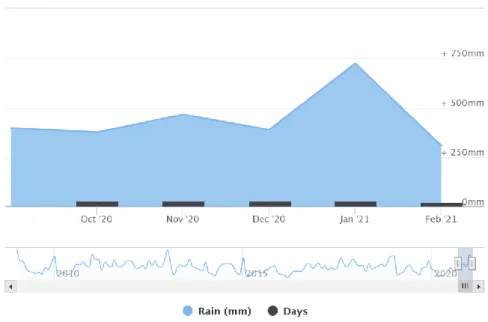
Insect defoliators on dipterocarp seedlings in a forest rehabilitation site in Lentang Forest Reserve, Pahang
When the larva was about to hatch, it built fragile silk webs on the surface of the leaves. On each of the first two abdominal segments, we can see four tufts of bushy bristles and two parallel white lines in the middle of the dorsal part of the abdomen. The pupa of Arctornis resembled the chrysalis of a butterfly as it hung on the underside of the leaf, supported only by silk threads (Fig. 13).
The green body of the young larva is well camouflaged against the large leaf of a keruing seedling on which the larva was resting. It has a white band with blue edges along the center of the body and two distinctive orange spots in the center of the band. The adult moth could not be obtained because rearing the larvae in the laboratory was unsuccessful.
The adult female has translucent wings with a greenish tint and dark triangular spots on the edges of the forewings. Since the introduction of the forest plantation scheme in 2003, in addition to investments and provision of soft loans, research and development of various aspects of forest plantations have also taken place. Nevertheless, the latest list of hosts and pests of forest plantation species in Malaysia is very suitable and useful for different stages of the plantation industry: research, establishment, management, processing and export.
This book provides an overview of insects in Sabah and can raise environmental awareness about the importance of forest conservation and restoration. The importance of insects is also elaborated in the book, emphasizing the benefits of insects, such as insects as pollinators and decomposers. In the final chapter of the book, the authors explain the common threats posed by insects and also explain conservation efforts to provide readers with information about how insects are conserved and protected.
Each mammal is beautifully captured, with an annotated box consisting of the species name, location and ecology of the illustrated mammal provided to aid the reader in identifying the animal. The checklist also reminds me of the rare and secretive mammals that I unfortunately failed to see despite spending considerable time in their habitats, such as the slow loris and the tarsier. First, the note box containing the description of the family and species name, location, and ecology of each mammal should be placed on the mammal's photos, rather than placed separately on the following page.
